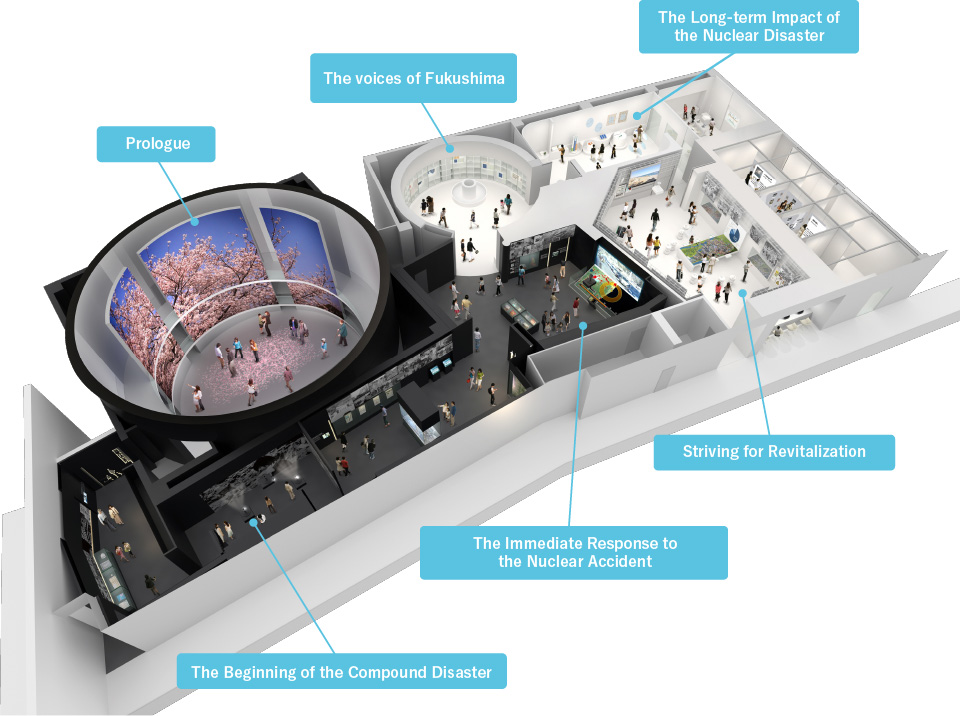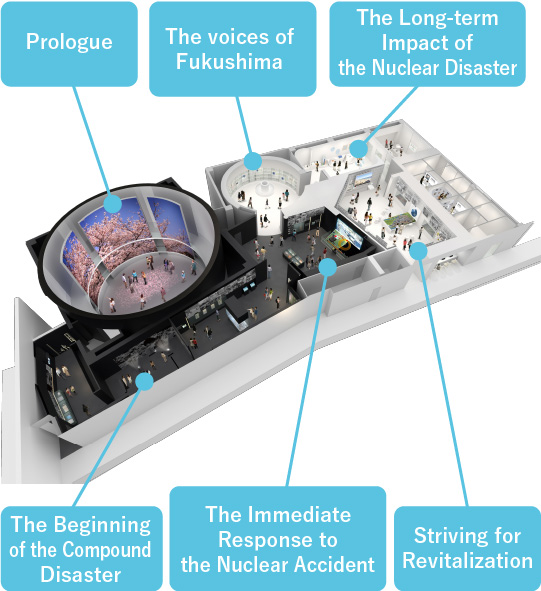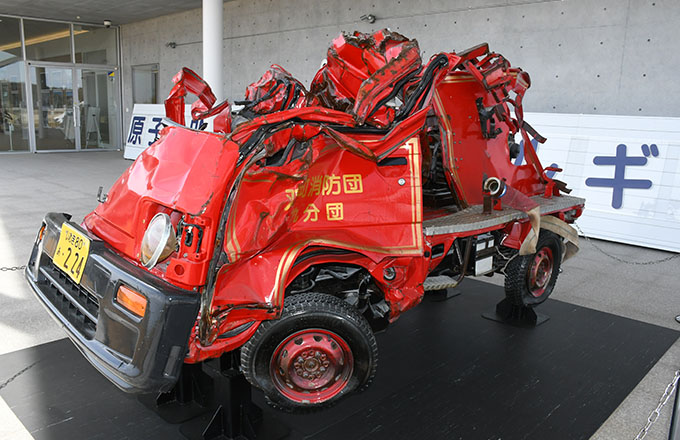- It should take you about an hour to see everything at the museum. But besides the exhibits, there are explanatory texts to read and videos to watch, as well as video testimonies from survivors, so some visitors spend several hours here.
Prologue
(Prologue Theatre)
A video introducing you to the exhibition is displayed on a set of seven huge screens. The narrator is actor Toshiyuki Nishida, a Fukushima native, and over actual footage and animations, he describes everything from the construction of the nuclear power plant, the events of the earthquake, tsunami, and nuclear accident, and the evacuation of residents, to the reconstruction of the prefecture and the decommissioning of the plant.














